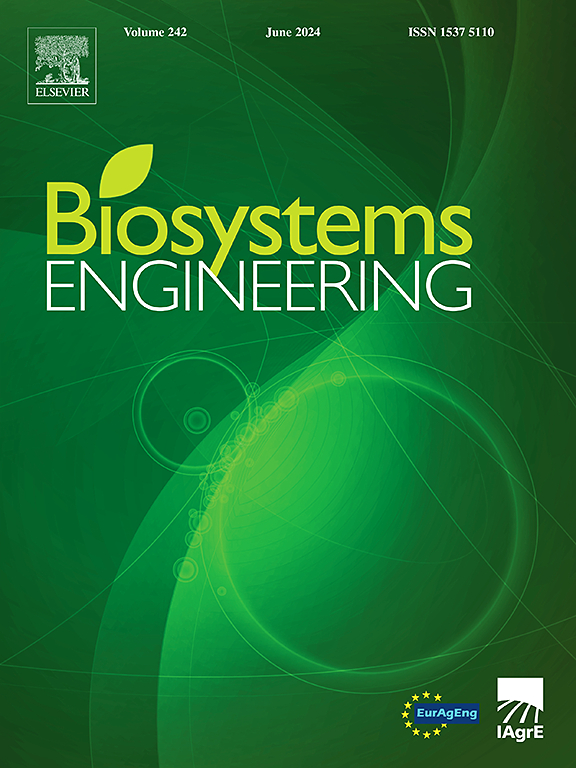Analysis of the two-way fluid-structure interaction between the rice canopy and the downwash airflow of a quadcopter UAV
IF 4.4
1区 农林科学
Q1 AGRICULTURAL ENGINEERING
引用次数: 0
Abstract
The rice vegetation canopy oscillates due to the UAV rotor downwash flow field, directly impacting the spatial distribution of UAV spray droplets within the crop canopy. However, the effects of the multirotor plant-protection UAV's downwash airflow, particularly its turbulent motion on the vegetation canopy, remain underexplored. This investigation employs a two-way coupled fluid-structure modeling approach to investigate the interaction between the UAV rotor downwash flow field and the rice canopy. The normalised mean absolute error (NMAE) of the measured and simulated downwash airflow velocities inside and outside the rice canopy ranged from a minimum of 5.06% to a maximum of 18.07%. Further, the relationship between the vegetative behaviour of rice and the UAV's downwash airflow was explored. The research results show a positive correlation between the strength of the mixed layer and the degree of bending in rice plants. Observations of the rotor's downwash flow field revealed several representative behavioural states of rice plants, including swaying, flapping, regular swinging, and irregular swinging. Additionally, coherent vortex structures in the mixing layer, associated with various behavioural states of rice plants, were compared. Subsequently, the distribution patterns of the downwash airflow within the rice canopy were explored. The findings of this study significantly enhance understanding of the complex interactions between the downwash airflow from a multi-rotor UAV and the crop canopy, highlighting crucial dynamics that affect spray deposition.
求助全文
约1分钟内获得全文
求助全文
来源期刊

Biosystems Engineering
农林科学-农业工程
CiteScore
10.60
自引率
7.80%
发文量
239
审稿时长
53 days
期刊介绍:
Biosystems Engineering publishes research in engineering and the physical sciences that represent advances in understanding or modelling of the performance of biological systems for sustainable developments in land use and the environment, agriculture and amenity, bioproduction processes and the food chain. The subject matter of the journal reflects the wide range and interdisciplinary nature of research in engineering for biological systems.
 求助内容:
求助内容: 应助结果提醒方式:
应助结果提醒方式:


